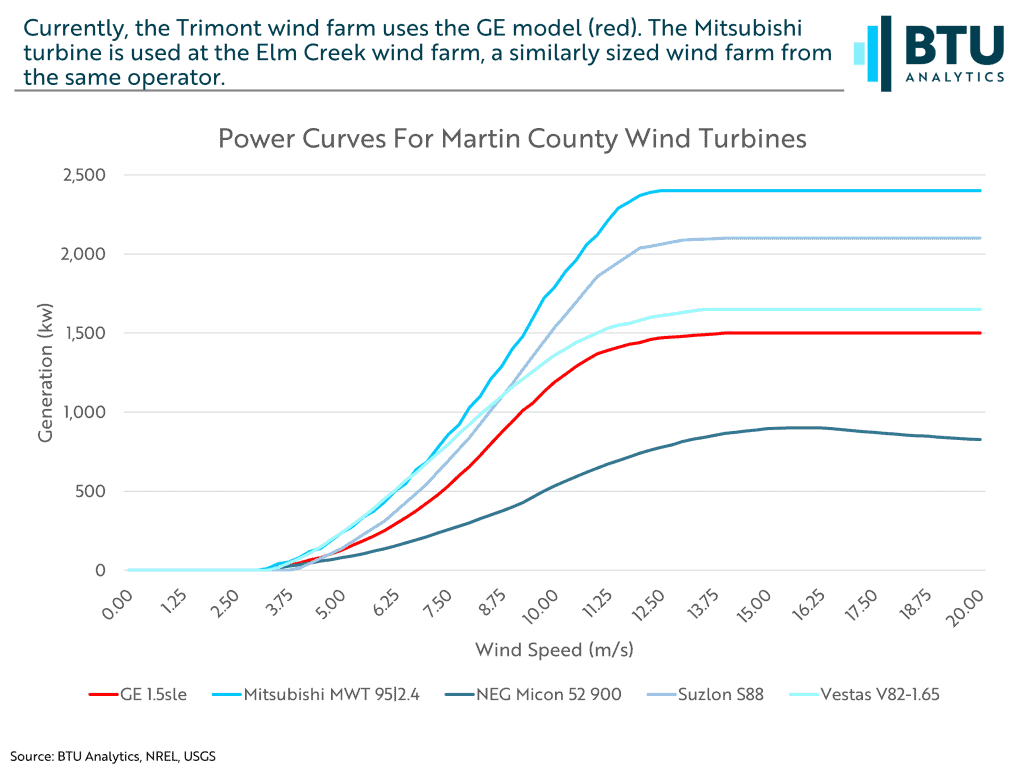As societal pressure continues to mount for increasing the amount of renewable energy produced in the US, wind power has continued to be the leading generation source in that category. According to the EIA, in 2019 renewables made up 17.5% of total US generation, with wind leading at 7.3% of US generation. While wind has proven to be a valuable energy source, due to mechanical degradation, wind farms over time begin to lose output. In light of this, and combined with technological improvements, many wind farm operators look to repower their existing facility. A wind repower most often means that operators switch out a number of turbines in the existing farm for new ones, either a new turbine to replace an old one of the same model, switching out an old model for a newer model, or some combination of the above. However, not all turbine models are the same, and each have different generation profiles. So how would different turbines affect capacity factors in these instances of repowering?
To demonstrate how different turbines affect generation, we are going to focus on a single plant. Below is the historical capacity factor (utilization) for the 100MW Trimont wind farm in Martin County, MN from BTU Analytics Power View.

This particular unit has been in-service since November 2005 and data over the past five years shows a downward trend in the plant’s capacity factor. This degradation in capacity factor can, at least partially, be attributed to aging technology and mechanical degradation.
So, what turbines could go in to replace the existing ones? As a simple example, here are the power curves for all the existing models of turbines in Martin county. The Trimont wind farm currently utilizes the GE model in red, and another similarly sized, 146 MW wind farm in Martin county with the same operator utilizes the Mitsubishi model.

These power curves show the amount of generation at different wind speeds (before factoring in losses), however this information alone can be misleading. Replacing the GE models with Mitsubishi models will not necessarily increase the capacity factor of the wind farm, just because the Mistubishi turbine is large and has a higher outright output. In order to see the effects of what the new models would have on capacity factors, we need to run a simulation to see how these inputs will directly affect the overall generation of the unit.

From the above, we start to get an idea of how repowering wind farms can help increase overall output. If the repowering project were scrapped, and the existing GE models were left in place, we can see capacity factors ranging from 20-40% throughout the year, which is relatively standard. However, replacing all the existing turbines with any of the other models (except for the NEG model, which is a significantly smaller turbine) would result in gains in overall capacity factors, with the Vestas improving the overall output the most, under these assumptions. This is just one example, and as of now there is no indication that the Trimont farm will be completely overhauled with brand new turbines. Most public documents for the project indicated the repowering will mostly be replacing hardware on existing turbines. In addition to that, there are hundreds of different turbine models, and repowering with each one would result in different generation profiles.
Interested in seeing more on BTU Analytics’ renewables generation outlook? Contact BTU Analytics today to get a free demo of the BTU Power View.








